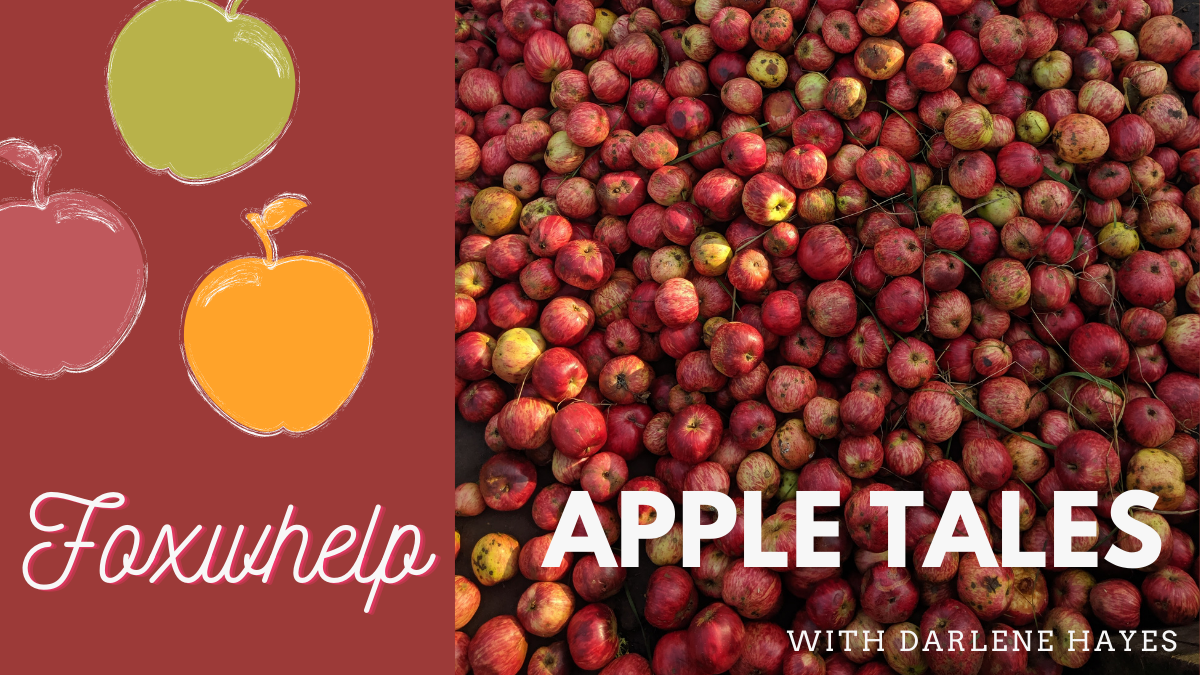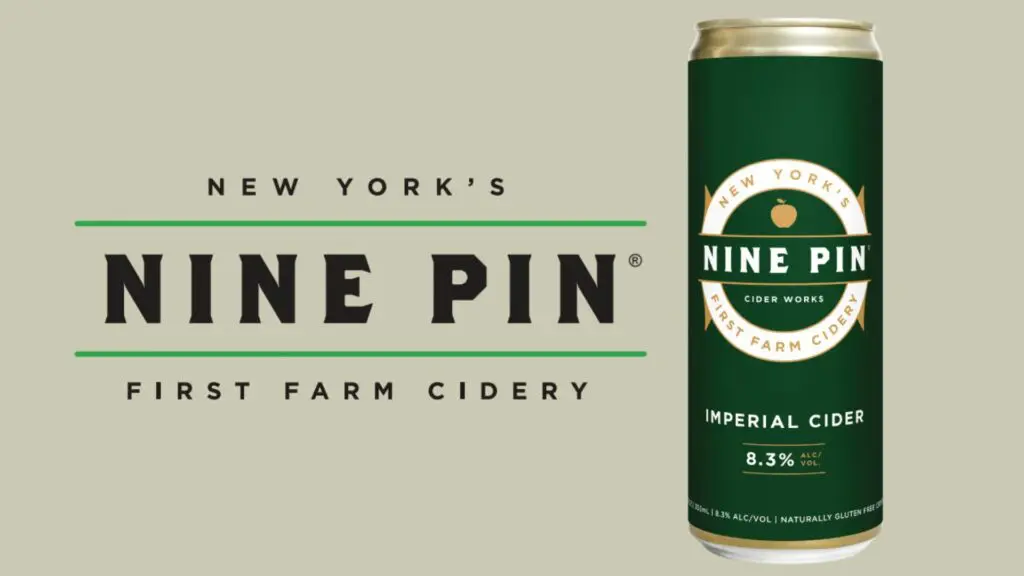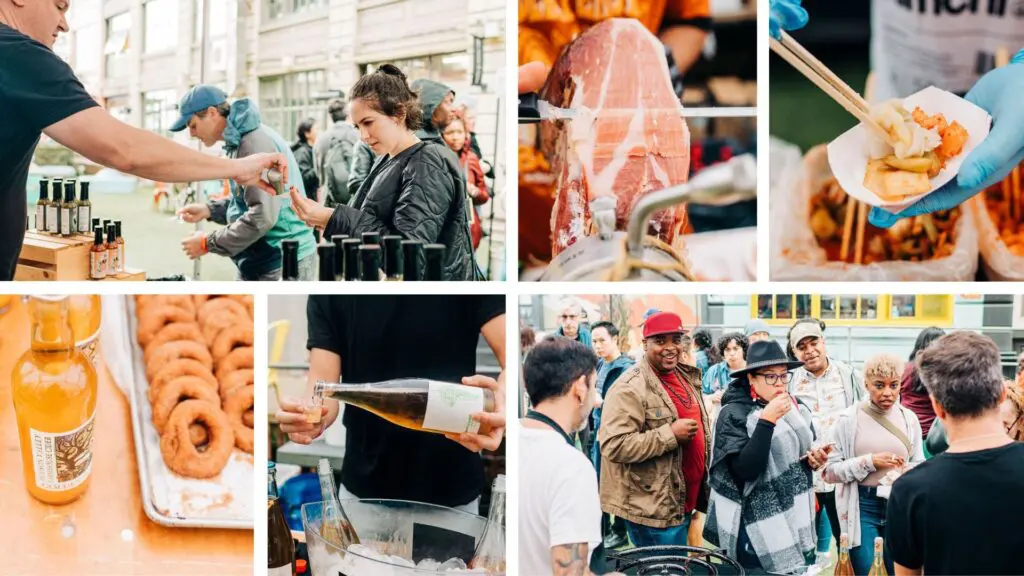Apple Tales with Darlene Hayes
By Darlene Hayes
There are a handful of apple varieties originating in England whose names quicken the heart of a cidermaker. One of these is Foxwhelp. It came as quite a disappointment, then, to discover that the apple maintained under the name “Foxwhelp” in the official USDA apple collection in Geneva, N.Y. — the source of scionwood for so many new orchards — was found to be something quite unrelated: a Fauxwhelp. There had been mutterings for a while about it not quite matching what was expected from the old descriptions; DNA analysis confirmed it.
It is a very old apple, cited by name in a number of mid-17th century English treatises on cidermaking, something that was reserved for only the best. As seems to happen with all famous apples, 200 years later there were any number of new arrivals bearing the Foxwhelp name: Bulmer’s Foxwhelp, Broxwood Foxwhelp, Black Foxwhelp, Red Foxwhelp, Rejuvenated Foxwhelp. How they related to the original wasn’t clear, though all seem to have found their way into some farmer’s cider barrels.
Foxwhelp first arrived in the United States courtesy of William Alwood (1859-1946), professor and vice director of the Virginia Agricultural Experiment Station (1888-1904). He’d been sent on a research trip to England, France and Germany in the late 19th century to learn about European cidermaking. He returned with enough information to write several treatises and a collection of scionwood for some of Europe’s most popular cider-specific apples, including Foxwhelp. Sadly, all of the research work done by Alwood came to naught as Prohibition loomed. He moved on to other work, and the apple varieties he collected relocated to another research orchard in Maryland, mostly vanishing from the public mind.
Foxwhelp next arrived in 1939 courtesy of the Gloucestershire nursery Hopwood & Sons, joining hundreds of other varieties grown at the USDA’s Plant Industry Station in Beltsville, Md. By 1963, Foxwhelp was being grown in agricultural experiment stations in Michigan, New Jersey, Pennsylvania and New York, sourced from the accession in Maryland, but also independently from a New York nursery (Kelly Brothers) and the Long Ashton Research Station in the United Kingdom. In the early 1980s, it was advertised in the catalogs of several commercial nurseries, though who might have been planting it, and why, isn’t clear.
Where did Fauxwhelp come from, then? Frankly, no one seems to have any idea. There had been a state-supported agricultural experiment station in Geneva from the 1880s, and Foxwhelp was listed as part of that collection in 1963. Trees die, however, and orchards get moved or labels switched. Clearly at some point when the collection came under USDA control and was moved to its current location in 1986, mistakes were made.
Mistaken identity is not uncommon when dealing with very old apples. Orchards change hands, memories fade, records are lost. If the cider made from the fruit still finds a place in the market, a farmer may not be all that fussy about keeping perfect track of the original variety name. This fact was brought home again just recently. Several versions of Foxwhelp were imported from the United Kingdom in 2015 after the discovery of Fauxwhelp. As they were close to leaving quarantine status, they also underwent DNA analysis where it was discovered that one was a completely different cider-specific apple (Ellis Bitter) and second could not possibly be a Foxwhelp as one of its parents was the 20th century apple, Gala.
Why all the fuss about Foxwhelp? Historically cider made from it was admired, though not without its complications. Robert Hogg, in his 1886 book The Apple and Pear as Vintage Fruits, quotes one 17th century writer as saying. “Cider for strength and a long-lasting drink is best made of the Fox-whelp … but which comes not to be drunk till two or three years old.” Hogg goes on to say, “It will retain its full flavor for twenty or thirty years.” The secret to this incredible longevity wasn’t tannin, but acid, and lots of it.
It’s Foxwhelp’s acidity that commends it to cidermakers in the United Kingdom, even today. It is most useful in a blend, adding a lilting brightness even in small amounts, and its ability to lower pH aids in stability, a useful attribute for the cidermaker that employs little or no microbe-killing sulfite during fermentation.
The volume of apples grown as Foxwhelp in the United States is still relatively small, so there are few examples of single variety cider sold under the Foxwhelp name. It seemed reasonable, then, to include here some sourced in England for comparison. All these English ciders were made with what the cidermakers believe to be Broxwood Foxwhelp, and all were as searlingly acidic as the writers of old would lead one to expect. Their common flavors were lemon and barely ripe stone fruit, apricot, peach and plum. The example from Little Pomona had taken on a pronounced smokiness from its years in a used Islay whisky barrel, and its acids somewhat rounder, perhaps due to the modified solera system in which it was made starting in 2015. One of the American ciders was similar in its acid profile to its British counterparts, but with generally riper fruit flavors.
The second American example was altogether different. The fruit flavors were riper and spicier, and the acid level, though perfectly balanced, was medium rather than high. This is not particularly surprising, for one can deduce from the source of the scionwood that the apple used in this cider wasn’t Foxwhelp, but Fauxwhelp. That being said, it is a very good cider, one that I was happy to drink. In the end that’s really what it’s all about, isn’t it? The varietal name on the bottle might well give you clues as to what to expect, but the true measure of pleasure comes from what’s in the glass.
Newton Court Cider – Newton, Leominster, U.K.
Medium sweet; lemon, apple skin, pear skin, yellow apple; sparkling
Undated | 6.6% ABV
Ross on Wye Cider and Perry Co. – Ross-on-Wye, Herefordshire, U.K.
Dry; lemon, lime, green plum, just ripe apricot, tart green apple; petillant
Harvested 2019, bottled 2021 | 5.6% ABV
Oliver’s Cider and Perry – Great Parton Farm Single Orchard – Ocle Pychard, Herefordshire, U.K.
Dry; lemon, green plum skin, barely ripe apricot, barely ripe peach, tart green apple, lime, lime zest; still
2020 | 5.1% ABV
Little Pomona – Bromyard, Herefordshire, U.K.
Dry; smoke, lemon, green plum, just ripe apricot and peach, vanilla, cedar, tart orange; still Harvested 2015,
bottled 2020 | 7.0% ABV
Eden Ciders – Oliver’s Twist – Newport, Vt.
Dry; lemon, green plum, green herbs, thyme, lemon zest, just ripe apricot; sparkling
Fruit grown in Lebanon, N.H.
2018 | 7.5% ABV
Alpenfire Cider – Port Townsend, Wash.
Dry; baking spice, ripe apple, orange juice, orange peel, ripe peach, mind apricot, hazelnut; sparkling
2016 | 6.9% ABV













 Looking for the perfect w
Looking for the perfect w





